Why Managed Futures?
For more than 30 years, investment management professionals like CTAs have helped investors expand their portfolios with investments in managed futures. As investors increasingly seek alternatives to such traditional assets as stocks, bonds and real estate, investment in the managed futures industry is experiencing significant and steady growth. The industry saw an approximately six-fold rise in invested assets, for example, just between 2000 and 2010, during which time investments increased from about $40 billion to nearly $250 billion.
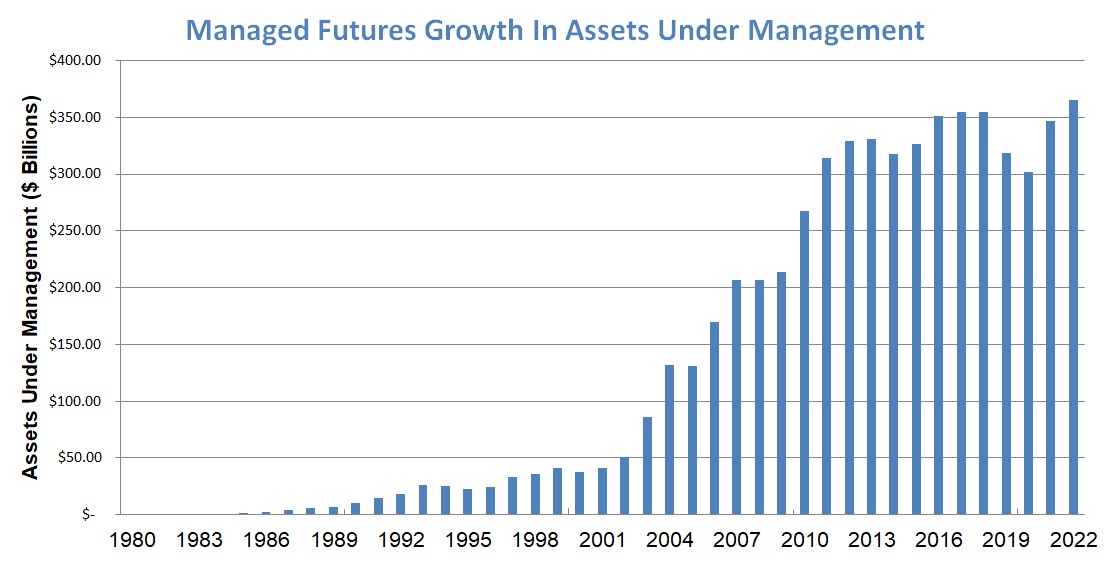
Yet this rapid investment growth is fueled by only a small percentage of investors, those who have been properly educated on the available types of investment vehicles, including alternative investments such as managed futures. Why don’t more people invest in this growing industry? Many investors are simply unaware of the opportunity managed futures programs present, while others believe they lack the capital necessary for investment. (Although managed futures programs require substantial investment, minimum investment amounts are not as high as many investors think.)
The industry continues to grow as more investors learn about the benefits of including managed futures in a well-balanced portfolio.
Benefits of Managed Futures
Broad Diversification Opportunities
Offering highly diverse investment opportunities—in terms of both geography and product—managed futures are a natural choice for investment portfolio diversification. Through managed futures programs, CTAs provide investors flexible investment options that are traded on over 150 global financial and commodity markets. Managed futures investment portfolios may include agricultural commodities, energy products, metals, interest rates, equities and foreign and domestic currencies.
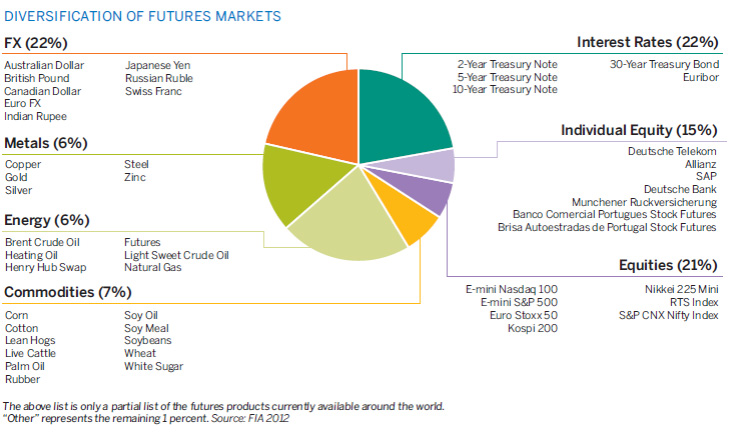
Reduced Overall Portfolio Risk
Because of this inherent diversity, managed futures offer the potential for lower overall volatility in a balanced investment portfolio. Moreover, investment in diverse global futures markets complements a portfolio’s other traditional asset classes, with which managed futures have virtually no long-term correlation; managed futures have the ability to yield profits regardless of the movement of stocks and other investment vehicles. It is important to note, however, that no managed futures program is without risk and any investment may be subject to substantial loss.
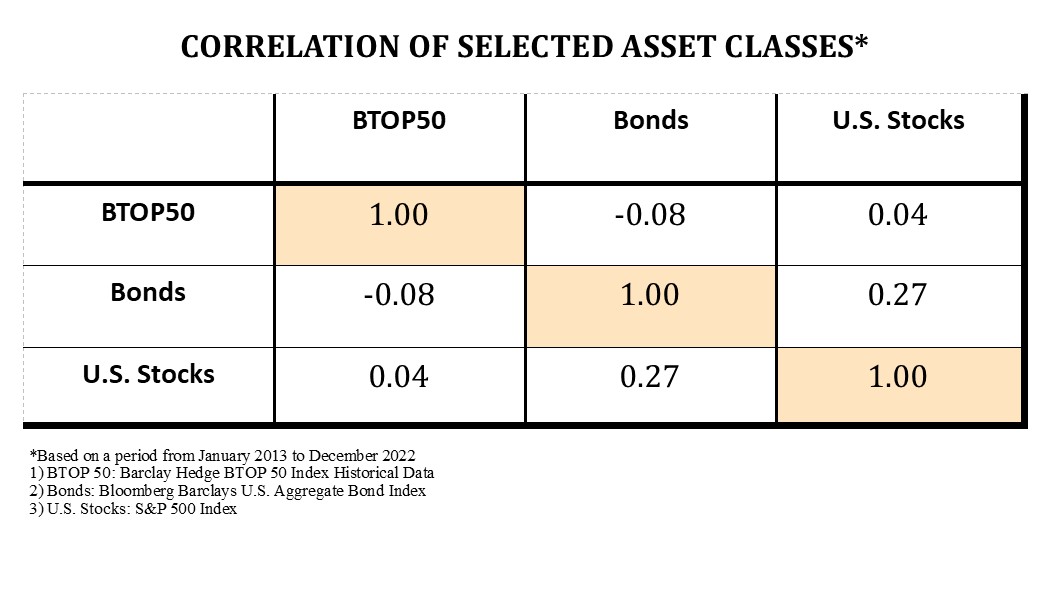
Enhanced Overall Portfolio Returns
Managed futures programs’ diversity and potential for reduced investment volatility contributes to their capacity to boost overall portfolio gains. A diverse, well-balanced investment portfolio can offer more effective performance. Adding managed futures to a portfolio of traditional investments provides the potential for higher returns with lower risk. Since each unique program is based on a particular CTA’s investment strategy and past performance is not indicative of future results, therefore, managed futures offer no guarantee of profit.
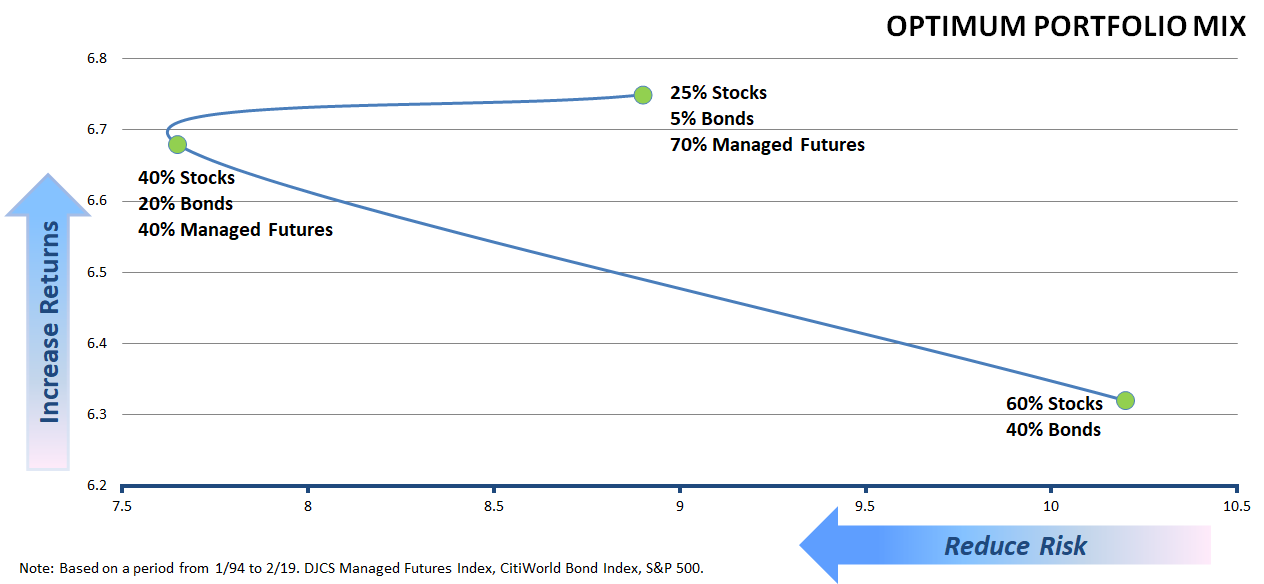
Profit Potential During All Economic Environments
Managed futures investments can generate profit in almost all market conditions. Managed futures give investors the ability to go long—buy futures positions—in order to profit from rising markets, go short (by selling positions) in anticipation of falling prices or take a more conservative approach with a spread that combines long and short positions. Managed futures have historically performed well in market conditions that are adverse for traditional asset classes like stocks and bonds. But as past performance is not indicative of future results, managed futures investments may not necessarily follow this trend.
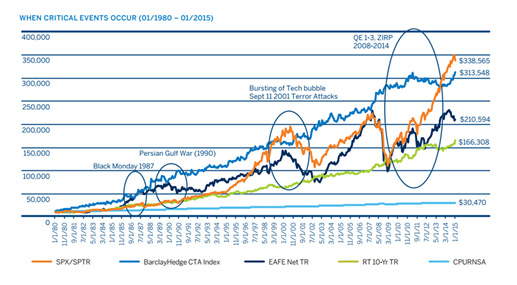
Data sourced from BarclayHedge, Ltd., MSCI Inc., Ryan Labs Inc., and Bloomberg, L.P.
Tax Advantages
An investor’s profits earned from managed futures accounts are taxed as if they are comprised of 60 percent long-term capital gains and 40 percent short-term capital gains. This is significant, because long-term capital gains are subject to a maximum federal income tax of just 15 percent, while short-term capital gains may be taxed at a rate as high as 35 percent. Many other investments, including stocks, must be held for at least 12 months before being taxed at the long-term capital gains rate. Managed futures accounts, though, do not require a specific length of investment to qualify for the coveted long-term capital gains tax rate.
Investment Security
Managed futures programs involve investment in highly regulated global markets. All U.S.-based futures investments are regulated by the CFTC and the NFA. With few exceptions, all CTAs and other professionals and firms conducting business on the futures market must register with both the CFTC and the NFA. The CFTC has the power to bring criminal charges against those who engage in fraudulent conduct or abusive practices and the NFA, in addition to its monitoring function, develops rules, programs and services that help safeguard market integrity.
Transparency and Liquidity
This tight regulation results in maximum transparency for investors. CTAs must provide all clients with daily access to account statements, details of all positions and complete disclosure information. And because managed futures accounts are settled on a daily basis, investors have the ability to monitor and track daily account activities. Since managed futures accounts are credited and debited daily, investments are generally highly liquid; investors maintain tight control of accounts and may withdraw or transfer funds as necessary to further reduce risk.